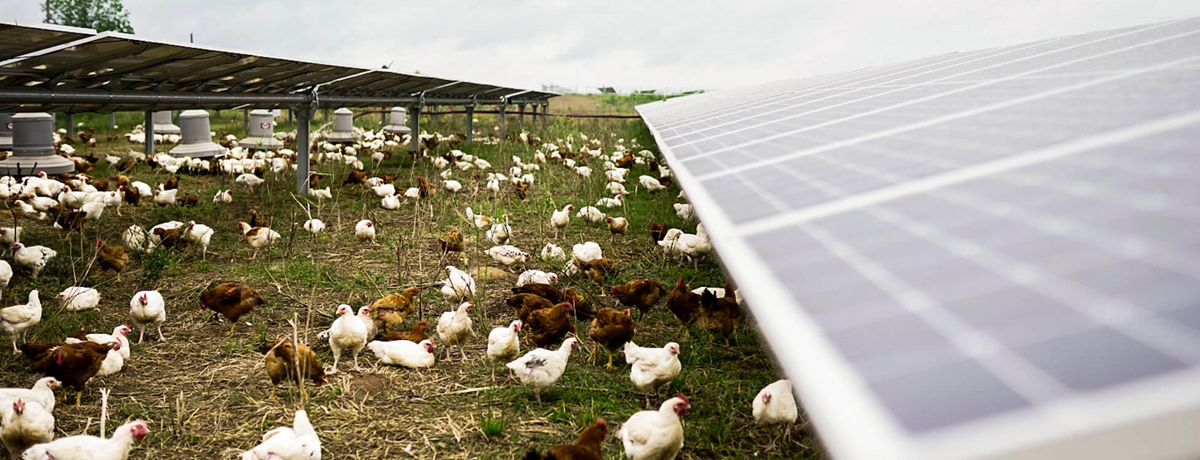Today I read that government ministers want to ban solar panels from farmland. Or more precisely, they want to change the definitions of good farmland in order to prevent more of it from being developed. This is supposed to be part of a drive for growth, apparently, though it sounds counter-productive to rural prosperity to me – see below. The rumoured change would have the effect of banning solar parks across 41% of England.
This is deeply misguided. The country is struggling with high energy bills, and solar power is the cheapest form of power generation and the quickest to install, according to the government’s own calculations. It’s also completely pointless, because if your solar farms are competing with food production, you’re doing it wrong.
Let me illustrate in pictures so you can see for yourself. Here’s a berry farm in the Netherlands:

Looking for a fruit a little bigger? Farmers in Belgium are using solar panels above pear orchards and have found that it reduces damage from hail. And look how pleased this German farmer is with himself for putting solar over his apple trees.

Here are some sheep sharing the field with a solar array in Devon. Sheep work so well alongside solar that farmers in America, who haven’t traditionally reared many sheep, are turning to them for the first time to go with their solar parks.

Here are chickens under solar in the state of Georgia. Solar panels pair well with free-range egg production.

You want vegetables? Here’s a farm in Colorado that was saved from bankruptcy by doubling up on their productivity and selling vegetables and solar power.

Behold these cows under some sturdy looking solar panels in Minnesota. Not only does this double up on land use, it’s better for the cows. The shade provided by the panels reduces heat stress and could be a useful way for farms to adapt to the increased risk of heatwaves.

Agrivoltaic beekeeping is practiced in Spain, France, the US, Canada and various other places, including the UK. The fields under the panels are planted with wildflowers, and the hives are located just to the side in order to keep the bee poo off the panels (seriously).

This vineyard in France also uses solar panels as a form of climate adaptation. As the risk of heat damage increases, and rainfall is less reliable, the panels provide shade and save water by reducing evaporation.

If you’re only happy if your farming comes with tractors and combine harvesters, then just raise your panels a little higher off the ground. Here’s a farm in Germany that you might like to see.

In short, Agrivoltaics is a rapidly growing branch of the energy transition. It is being applied to all manner of crops across the world. All kinds of benefits are emerging, with China even using it to reverse desertification. Not only is it expanding clean energy production, it is providing a vital second income stream for farmers. Banning it would cut off a really important opportunity for Britain’s farmers, at a time when rural poverty is a real issue.
Of course, most solar farms are not built by farmers, but by energy companies or land developers. In which case, the answer is not to ban solar farms, but to consider what Japan is doing. As an island nation with a big population, they are protective of their farmland and don’t want to lose any to solar parks. They are using tax incentives to encourage agrivoltaic projects, and solar farms have to include crops or livestock right from the planning stages if they are to get the go-ahead. That might be a better approach fo the UK – and to be honest it sounds like more of an authentically Conservative approach than banning farmers from doing things that will make them money.
So if you have a Conservative MP, please write to them and teach them the word agrivoltaic.
This post was written by Jeremy Williams and first appeared on The Earthbound Report. It’s republished here (with minor changes) under a Creative Commons license. Views expressed by third-party authors aren’t necessarily those of Greenpeace.



